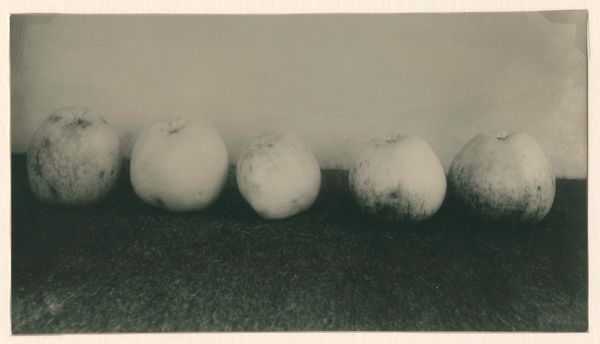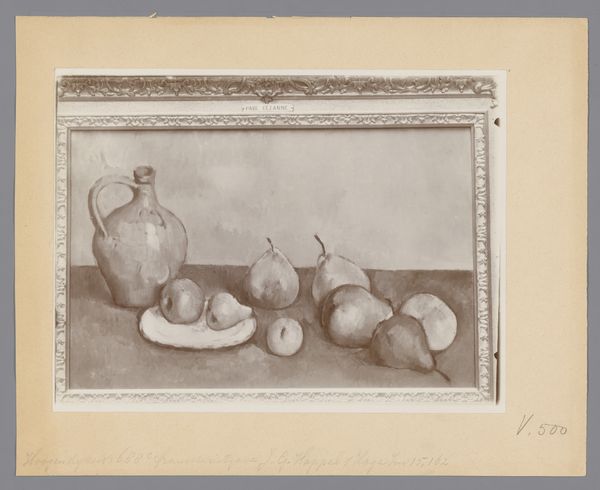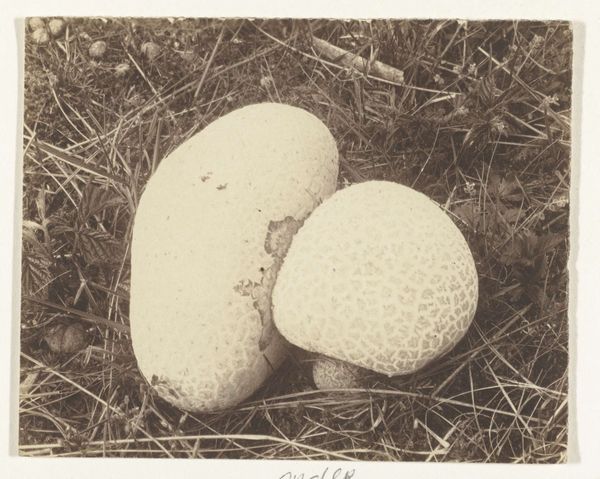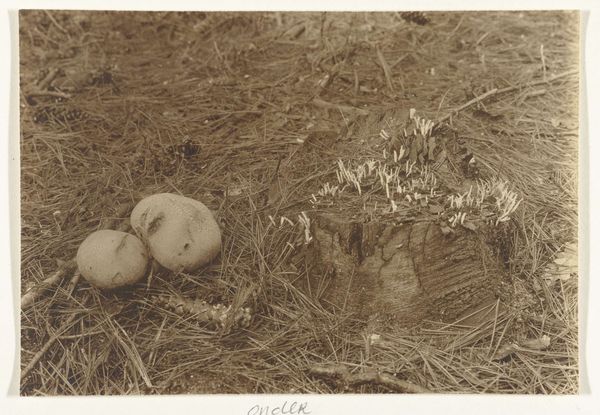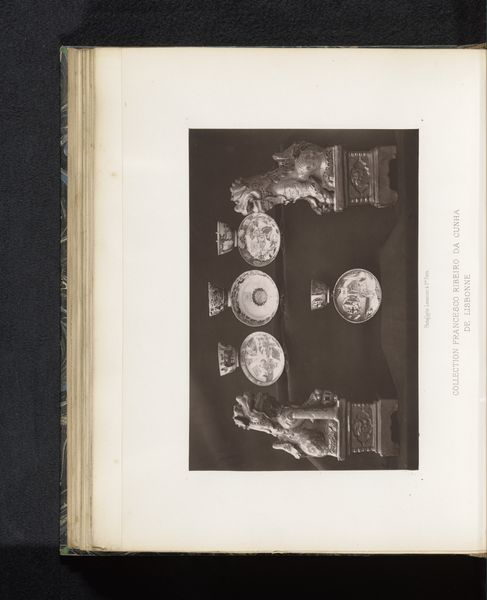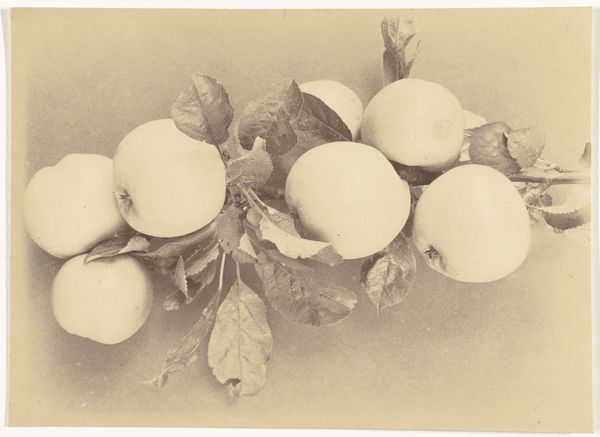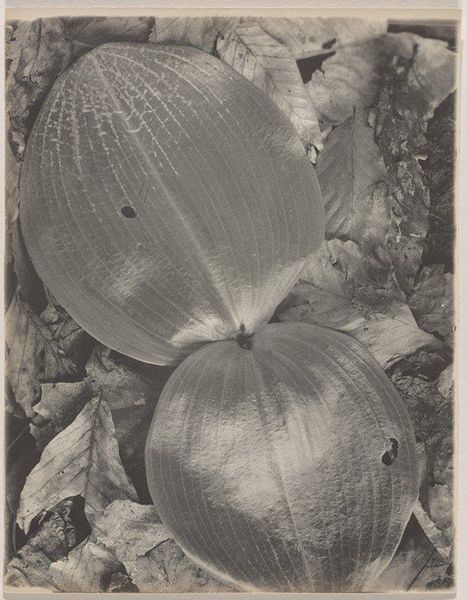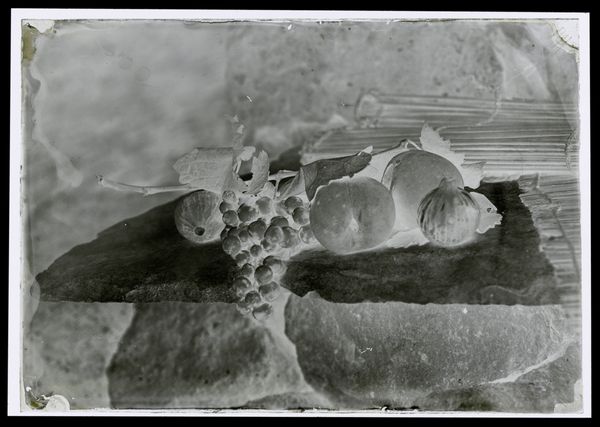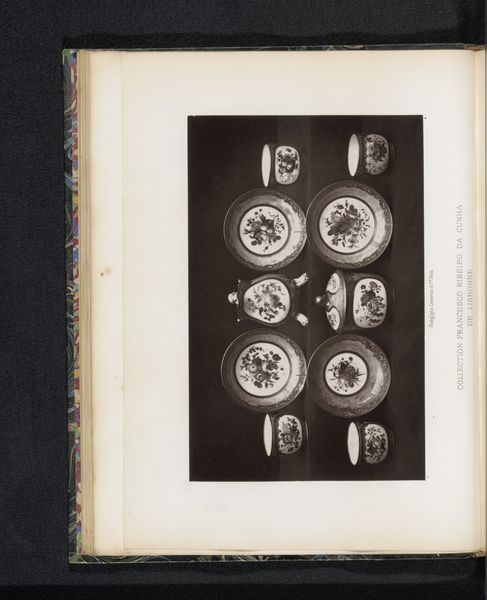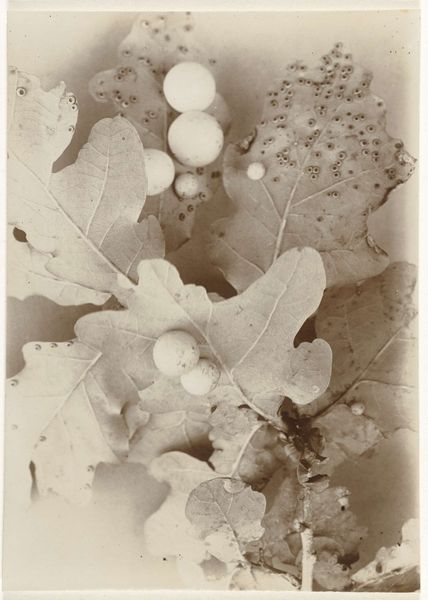
photography
#
photography
#
realism
#
monochrome
Dimensions: height 135 mm, width 226 mm
Copyright: Rijks Museum: Open Domain
Editor: Here we have "Apples," a photograph taken around 1920 by Richard Tepe, housed in the Rijksmuseum. The monochrome palette and the peeling of the fruit create an interesting still life, almost unsettling in its starkness. What do you see in this piece? Curator: This photograph resonates with broader social and political contexts of its time, specifically exploring the role of food and sustenance during and after the First World War. What narratives emerge when you view these peeled apples not just as objects, but as representations of vulnerability and forced transformation? Editor: Vulnerability? Forced transformation? Tell me more. Curator: Well, consider the context. After the war, scarcity was rampant. To me, these peeled apples symbolize a sort of… unburdening. But it also evokes loss and a raw exposure. The peeling itself becomes an act loaded with meaning – necessity perhaps, but also a stripping away, a removal of protection. Doesn’t this monochrome style, coupled with such common produce, push this discussion on how common items may reveal social stratification or change of custom during social trauma? Editor: That’s a very different reading than I initially had. I hadn’t considered the post-war implications at all. I guess the realism style adds some nuance too, focusing attention on details you'd overlook at first glance. Curator: Precisely! And isn't photography, particularly at this time, deeply intertwined with ideas of documentation and truth? So the way Tepe frames such everyday objects invites us to interrogate notions of simplicity and bareness. To consider it stripped bare as in people were materially and mentally stripped bare because of the events of war. Editor: I see what you mean. It definitely adds layers of complexity to something seemingly simple. Curator: Absolutely. Considering the era, this shifts how we see ordinary objects as carrying resonant social and personal meanings of post-war times. Editor: Thank you, this gave me a lot to think about, how ordinary objects are tied to human experience and sociopolitical context.
Comments
No comments
Be the first to comment and join the conversation on the ultimate creative platform.
